Targeting Audiences with Precision: Strategies for Meta Ads

Does your brand follow new social trends? Trends are an inherent part of social platforms and affect your content’s reach and how the social algorithm works.
For example, Facebook introduced reels in February 2022[1] as a monetisation tool for content creators. Instagram rolled out[2] new tools for scheduling posts, remixing reels and profile song features.
49%[3] of marketers say identifying trends is one of the biggest challenges for establishing a brand’s online presence. So, how do you stay aware of the ever-evolving trends? One way is to use valuable tools like Meta Ads Manager. The Audience Insights feature helps tap into the evolving trends on the platform and determine which complements your campaign.
This blog is a comprehensive guide to creating ultra-precise targeting strategies with Meta ads for a high-performing campaign.
Understanding Meta’s Targeting Options
Facebook is a valuable platform that provides brands with a large audience they can target with ads. Meta ads offer comprehensive targeting options, like demographics, behaviour and interests. This helps to create campaigns that reach high-converting audiences and improve the ROI (return on investment).
Here are the three different types of audiences you can target with Meta Ads-
-
Saved Audiences: Targeting audiences based on specific demographics, behaviours, locations, etc.
-
Custom Audiences: Targeting those familiar with your brand and who have already interacted with your business.
-
Lookalike Audiences: Targeting customers who aren’t aware of your business but share characteristics with your primary audience.
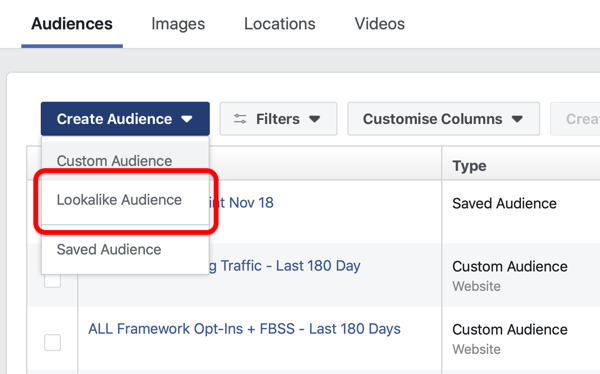
Different Strategies for Precise Audience Targeting with Meta Ads
Ad Meta provides different retargeting and prospecting strategies to create high-performing campaigns.
Given below are the precise audience targeting strategies that boost conversion.
Audience Insights: Targeting New and Existing Customers
Audience Insights is a valuable tool that offers insights from your existing Facebook followers. For example, your audience’s location, age, job title, or interests.
Go to Business Manager > Audience Insights. You can choose to gain insights for people connected to your page, any custom audience, or everyone on Facebook.
If you want information on your page’s followers, choose the “people connected to your page” option. To gain insights into the audience beyond your page, choose “everyone on Facebook.”
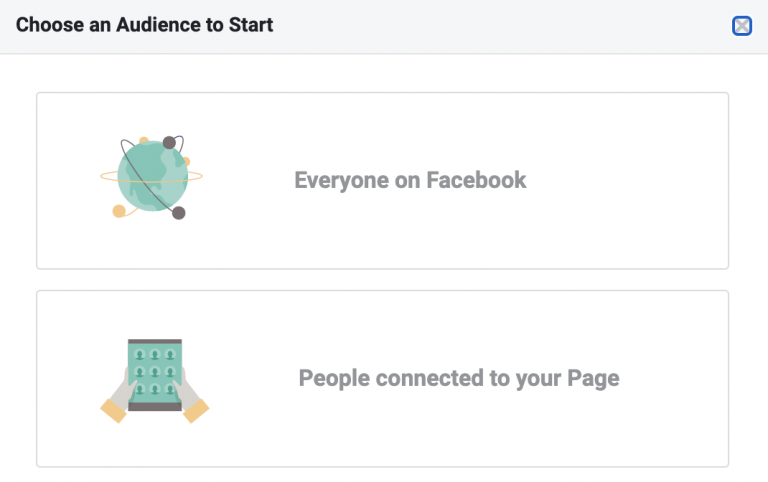
Next, apply specific filters to your audience results. You can narrow the results by applying filters on interests, age, and gender. This helps to target new customers effectively.
For example, Winc displayed their ad to audiences with a similar interest – wine. The advertisement appeared on search pages and news feeds of audiences who would browse content related to wine.
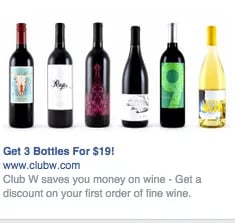
Custom Audiences: Retargeting to Connect with Potential Customers
Retargeting is always easier than prospecting. It is a valuable tool that allows you to reconnect with warm audiences (people who have interacted with your business or shown interest in it). Meta ads allow you to create custom audiences from sources like websites, customer lists, app activity, etc.
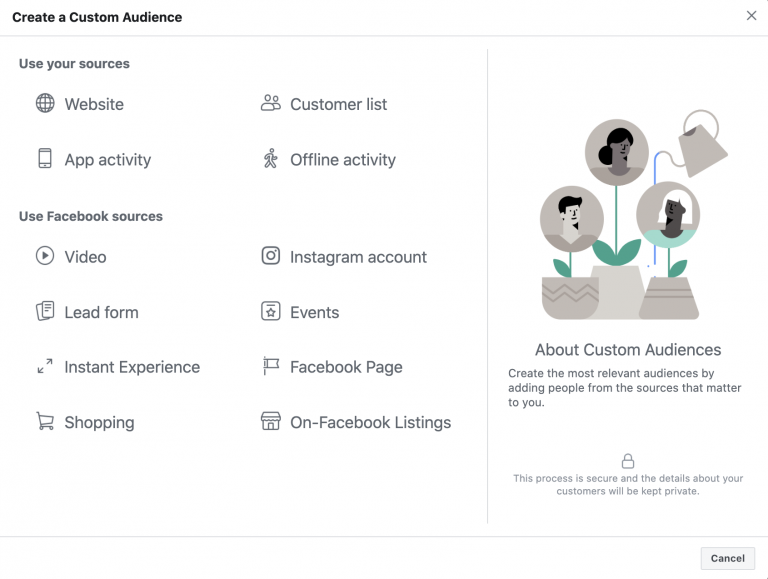 Website: Create a custom audience based on your website activity.
Website: Create a custom audience based on your website activity.
Customer list: You can import your existing email or customer list into Facebook with a CSV or TXT file.
App Activity: Create an audience based on the people who used your app or performed specific actions.
Offline Activity: Refine your custom audiences based on offline activity in physical stores.
Creating custom audiences saves time during campaigns as you don’t have to start from scratch. For example, you can show your ads to all the website visitors in the last 30 days or people who checked specific products. To create custom audiences based on your website, install Facebook Pixel.
Here’s how you can create a custom audience based on your website-
-
Select Audiences in Meta Ads Manager
-
Click on Create Audience. Choose Custom Audience from the dropdown.
-
From sources, choose a website.
-
Select your pixel.
-
Select the event type you wish to target under the events sections. For example, “All website visitors” or “People who visited specific web pages.”
-
Enter the retention value. E.g., target people who visited in the last 3 days or 30 days.
-
Give your audience an easily recognisable name. Click “Create audience.”
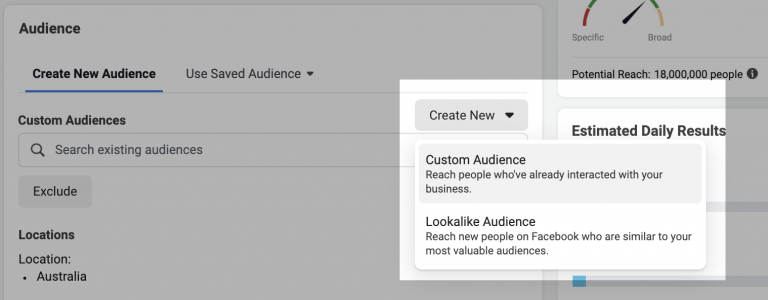
Lookalike Audiences: Value-Based Targeting of Potential Customers
A Lookalike Audience is a segment of the audience sharing the same characteristics as your existing custom audiences. It is one of the preferred strategies by advertisers to target cold audiences—for example, your email list or customer list. Hence, you should create your custom audience first.
Follow these steps to create a custom audience based on the email list-
-
Open Meta Ads Manager> Audiences.
-
Choose Custom Audience from the dropdown list.
-
In the pop-up window, choose your customer file. You can import the list from an email service provider or upload a CSV file (the easier option).
-
Select the CSV file for the email list and click next.
-
Next, map the identifiers for the Facebook algorithm. E.g., map name and email columns. For advanced targeting, choose more identifiers to give a refined result. Click import and create.
Here’s how you create the lookalike audience-
-
Click on All Tools and then Audiences. Meta ads list all the custom audiences you have created.
-
Choose the email list custom audience you created in the above steps. Click on the three dots and create a lookalike audience from the drop-down.
-
In the pop-up, your email list appears in the source.
-
Choose the audience location and audience size. Click “Create audience.”
Pro Tip: Facebook recommends an audience list between 1,000 and 50,000 people for an optimised targeting result.
Layered Targeting: Ultra-Precise Results
The core targeting in Facebook includes three main categories: demographics, behaviour, and interests. However, you can obtain refined results by applying different filters. For example, you can go deeper into demographics by targeting only parents with toddlers.
Whenever you want to narrow your search, click “Narrow further.” Besides, each filter should show “must also match” for that criterion. Further, you can target people based on life events, such as those who got a new job or moved to a new city.
Layered targeting gives precise search results for campaigns targeting a niche audience. Whenever you apply a filter, the audience on your right side reduces until the ad meta displays an error.
Pro Tip: Combine the layered targeting with the landing page for high-converting results.

Meta Ads Library: Analyse Competitors and Improve Ads
The Facebook ads library meta is a tool for optimising your campaigns. Launched in 2018, Meta Ads Library is a free tool that allows users to access their previous and active ads. The goal of the library is to increase transparency for users.
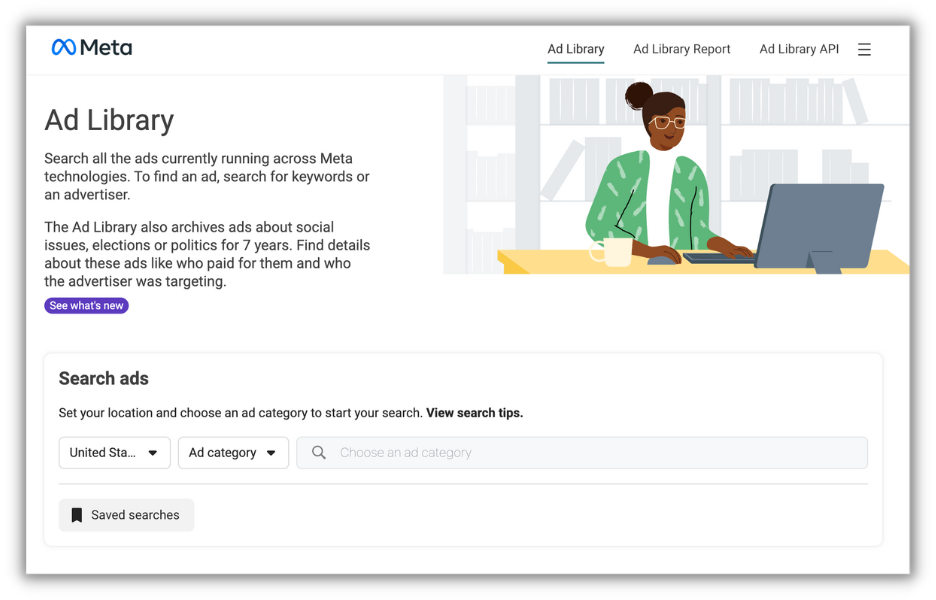
How to use Meta Ad Library?
Meta Ads Library is a comprehensive tool for competitor analysis linked to the Facebook business page. Analyse your competitor’s active and previous ads and get ideas for your next campaign. To start with, visit https://www.facebook.com/ads/library[4]. Submit the required details like competitor's location and business details.
You can access all the ads created by a business in the last seven years.

Here are the different scenarios for using Meta Ads Library:
-
Find the gaps in the competitor’s ads and use them to optimise your campaigns.
-
Analyse your ads and find out what worked and what didn’t.
Monitoring and Adjusting Campaigns
Meta ads are about creating and running campaigns and finding which converts better. Monitoring and optimising your campaigns are essential for gaining new customers, allocating resources effectively, strengthening customer relationships, and achieving your business goals.
Measurement to Optimise Campaigns
Here’s how brands can use measurement to craft high-performing campaigns-
-
Track key metrics like conversion impressions, clicks, reach, and cost for each conversion.
-
Run A/B testing (comparing methods/formats and choosing the best one) for different targeting options, ad formats, and ad sources.
-
Analyse the results to determine the effectiveness and shortfalls of the campaign.
Optimise Campaigns to Strengthening Relationships
Here’s how businesses can use campaigns for building relationships-
-
Meta’s Messaging Platform: One of the best ways to build and nurture customer relationships is messaging platforms like WhatsApp, Instagram and Messenger. 66%[5] of people prefer brands that contact them through messaging.
-
Instant Forms: It is a valuable tool to improve lead generation by gathering information on potential customers and their interests.
-
Click-to-Messenger Ads: Craft personalised messages to be sent on Messenger when a user clicks on the ads. The message could include an invite for a chat or offer customer support.
The Bottom Line
Advanced targeting options help to reach people who are interested or already interacted with your business. It improves the chances of conversion and saves your time and effort.
Meta ads provide advanced targeting options like layered targeting, custom audiences, lookalike audiences, and broad targeting. Additionally, after running your campaign, measure your campaign intermittently. Perform A/B testing to find which targeting option works best for your business.
Is your brand looking to revamp its social media strategy? Growth Jockey creates highly targeted campaigns that reach the right audience. Our team creates compelling creatives that capture the audience's attention and prompts that boosts engagement and conversion.
Contact Growth Jockey today!
FAQs
Can I target prospects based on the type of mobile devices they use?
Yes, Device Level Targeting enables brands to reach customers or prospects as per the devices they use for viewing ads. This assists them in optimising the ad design and user experience accordingly.
How do I use dynamic ads to target customers?
Dynamic ads show targeted product recommendations to customers according to their past interactions with the app. This can convince them to complete their purchases, boosting conversion opportunities.
How do you leverage videos in ads while targeting?
Ads with compelling videos might be effective for targeting younger audiences. Keep these videos short and appealing, with impactful storytelling.









